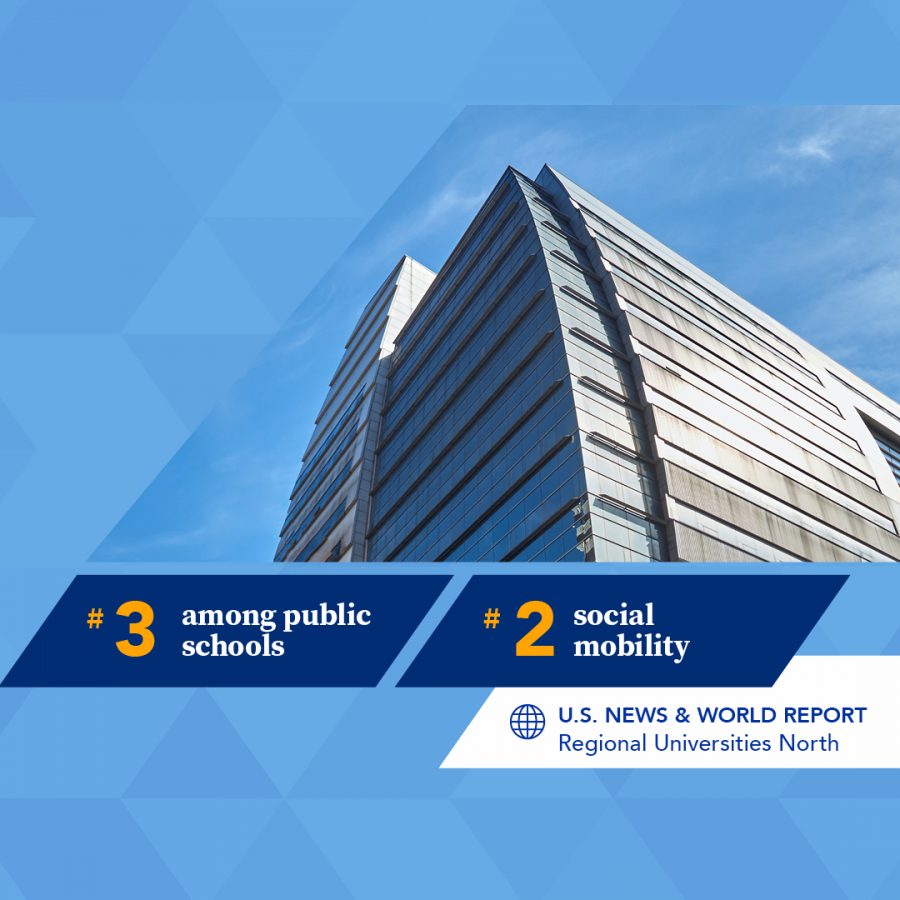US News & World Report ranks Baruch as No. 3 best public college in the North
September 24, 2021
Baruch College ranked third place in the U.S. News & World Report’s 2022 top public schools in the Northern region, second place among public universities in New York State and No. 16 among both private and public schools in the region.
“These rankings reflect the distinctive value proposition Baruch College offers all its students,” Baruch President S. David Wu said, according to a statement the college released on its website. “We provide a truly transformational education, at scale, through nationally acclaimed academic programs, distinguished faculty, and extensive student support services that attend to the personal and career needs of our students.”
Baruch ranked second in top performers on social mobility, which measures how successfully schools were able to graduate recipients of federal Pell Grants.
These recipients are students whose annual household incomes fall between $20,000-$50,000 per year or less.
Regarding debt load, Baruch placed third in carrying the least, a positive sign for the school and its students’ financial freedom in the future.
When deciding the list of best college rankings for 2022, the U.S. News & World Report evaluated 1,466 bachelor’s degree-granting institutions in the U.S. based on 17 different measures.
These measures include average alumni giving rate, average class size, average faculty salaries, faculty with a doctoral or terminal degree, financial resources, expert opinion, first-year student retention rate average, graduate indebtedness total and graduate indebtedness proportion with debt.
Evaluations were also based on graduation rate average and performance, high school class standing, Pell Grant graduation rates and performance, proportion of full-time faculty, SAT and ACT scores and student-faculty ratio.
These 17 measures were then combined into a group of nine total ranking factors, which makes up the rankings’ weight. These factors include graduation and retention rates, making up 22% of the total; social mobility, accounting for 5%; and graduation rate performance, accounting for 8%.
Other factors include undergraduate academic reputation, accounting for 20%, faculty resources for 2020-21 academic year, accounting for 20%, and student selectivity for the fall 2020 entering class, accounting for 7%.
The rankings’ weight is also dependent on financial resources per student, accounting for 10%, average alumni giving rate, accounting for 3%, and graduate indebtedness, accounting for 5%.
Sources that the report used in its ranking this year included data provided to them from schools, government data and other third-party experts. Non-academic elements, including clubs and athletics, are not counted toward these rankings.
Baruch had high rankings in other categories as well.
Baruch was ranked No. 10 in innovation. To rank this, experts measured how innovative they observe a school’s teaching methods to be.
Other notable rankings Baruch attained are fifth in campus ethnic diversity, ninth for most international students and sixth for freshman retention rate.
The college also was No. 18 for best undergraduate teaching and No. 27 for economic diversity. Unfortunately, it placed only No. 70 in best value schools.
“Baruch has reaffirmed its position for delivering rigorous, high-caliber academic programs accessible to an incredibly diverse, under-represented student population,” Wu said. “With this, we occupy a distinctive niche that also stands as a new model for higher education.”








